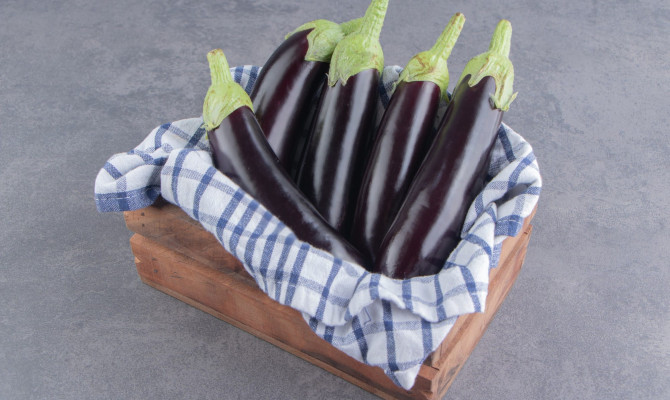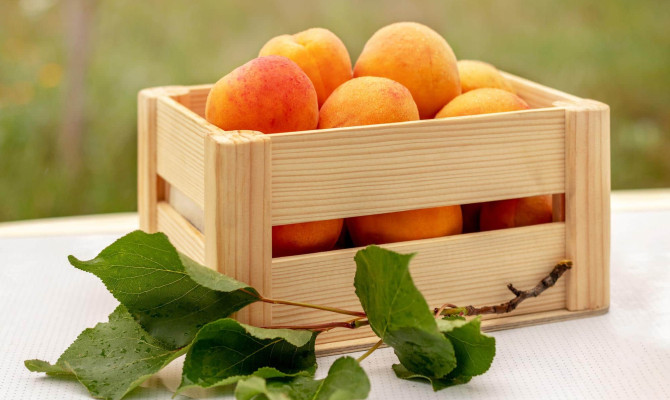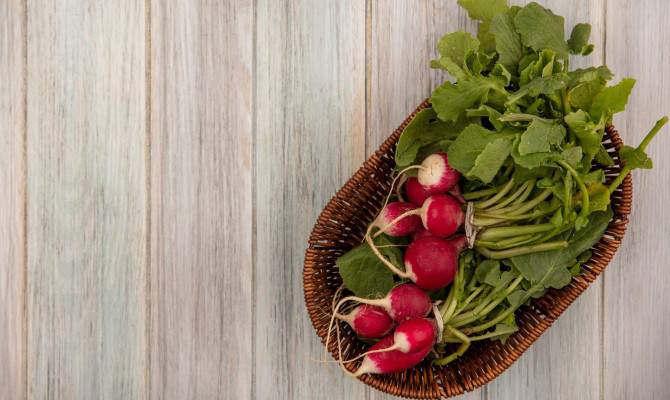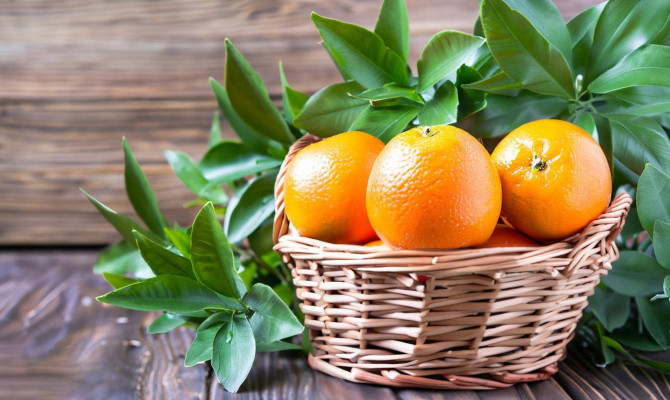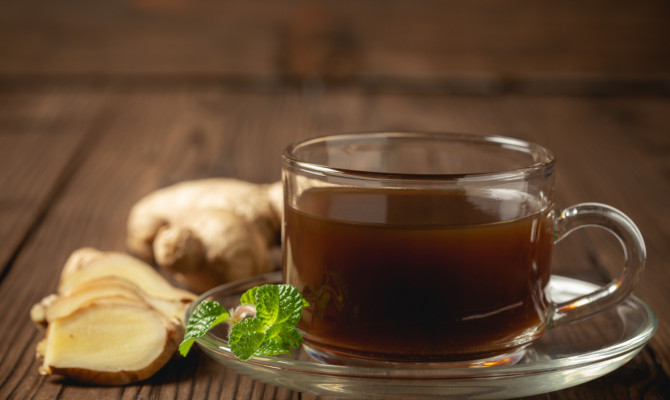Unveiling the Health benefits and Nutrition values of Corn

- Corn
- 22 Aug 2023
Overview
What is Corn?
Corn (Zea mays) is an annual cereal crop from the grass family Poaceae. The plant has tall grass with solid erect stem. The corn ears (edible spike part of the plant containing kernels) have a thick axis with longitudinal rows of grains surrounding it and are enclosed in modified leaves called husks or shucks.
The corn ear’s size ranges from 2.5 cm to 45 cm long, and the shape and color may vary.
The most popular corns are white and yellow corn, although other varieties such as pink, red, blue, and black kernels also exist.
The corn kernels are used to produce a variety of foods, animal feeds, medicines, and industrial products. Corn is a staple food in various parts of the world.
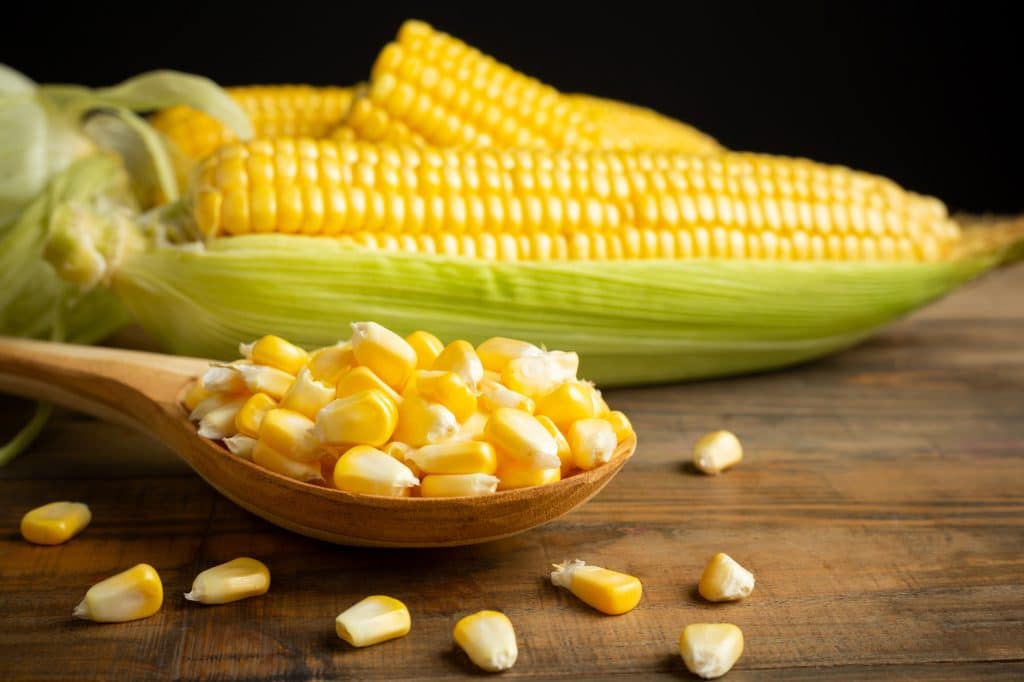
Facts of corn
- The other names of corn are maize, silk maize, zea, mealie, and makka.
- Corn is indigenous to Central America, but now it is grown worldwide.
- Corn grows best in sunny weather, with temperatures 75 to 86 degrees Fahrenheit.
- Corn is the most widely cultivated crop globally, with annual production more significant than other grains.
- In the United States, there are more than 200 varieties of corn
- In 2020, the total world production of corn was 1.16 billion tonnes, with the United States producing 31% of the total, followed by China 22.4% 1Overview| Researched based study from Sciencedirect.com
Types
Types of Corn
The four main types of corn are as follows:
Sweet corn
- It is yellow, white, or a combination of two colors
- It has a mild sweet taste
Popcorn
- It has a soft, starchy center with a hard gold-colored shell surrounding it.
- It has a tiny water droplet inside it.
- While heating popcorn in a pan, the moisture inside gives off steam. The pressure from the steam builds up so much that the corn explodes, and the center opens into a fluffy white nugget.
Dent corn
- It comes in white and yellow and has a cavity at the top of each kernel. The main uses are animal feed and manufactured food.
Flint corn
- It is harder than sweet corn and comes in white, blue, red, black, and gold. It grows in South and Central America 13Types| Researched based study from Sciencedirect.com
Nutrition
Nutrition in Corn
100 grams of boiled yellow corn has the following nutrition:
- Calories-96
- Water-73%
- Fiber-2.4 gm (gram)
- Sugar-4.5 gm
- Carbohydrate-21 gm
- Protein-3.4 gm
- Fat-1.5 gm 2Nutrition| Researched based study from Usda.gov
Also
- Starch is the main carbohydrate in corn, with 28 to 80% of dry weight. Sweet corn is low in starch while high in sugar (18% of dry weight).
- Despite the sugar content in sweet corn, it has a low to medium glycemic index. The glycemic index is the value assigned to carbohydrate foods to indicate how fast the food increases the sugar level in the body.
- The fibers of corn are primarily insoluble and consist of cellulose, lignin, and hemicellulose.
- The most plentiful protein in corn is zeins. Zeins have industrial applications such as preparing inks, adhesives, pill coatings, nuts, and candy.
- Corn germ (a byproduct of corn milling) is abundant in fat and is used to make corn cooking oil.
Vitamins and minerals in corn
The minerals present in popcorn are as follows:
- Phosphorus
- Manganese
- Magnesium
- Copper
- Zinc
The vitamins and minerals present in sweet corn are as follows:
- Vitamin B6 (Pyridoxine)
- Vitamin B9 (Folate)
- Vitamin B5 (Pantothenic acid)
- Vitamin B3 (Niacin)
- Potassium
Fiber, vitamins, and minerals have the following function in our body
Fiber
- Fiber helps soak up water and hasten the movement of stool in the intestine.
- It improves gut health and prevents constipation
Phosphorus
- It is needed for healthy bones and teeth
- It helps trigger several enzymes and maintains the normal blood pH
Manganese
- It helps bodily processes to function properly
- It supports in building up of the bones
Magnesium
- Magnesium supports the muscles and nerve functions
- It also maintains the usual bone health
Copper
- Copper together with iron, helps the body form red blood cells
- It maintains the nerve and immune system of the body
Zinc
- It helps in cell development, cell division, sore healing, and carbohydrate breakdown.
- It helps the immune system work properly
Vitamin B6 (Pyridoxine)
- It is vital for correct brain functioning
- It supports the immune system and nervous systems
Vitamin B9 (Folate)
- It is required for the synthesis of white and red blood cells
- It helps in average tissue growth and cell execution
Vitamin B5 (Pantothenic acid)
- Vitamin B5 is essential for making blood cells
- It helps in converting food into energy
Vitamin B3 (Niacin)
- It is crucial for cell growth and functioning
- It improves blood circulation and helps convert food into energy
Potassium
- Potassium is essential for correct nerve and muscle functioning
- It is vital for regulating the blood pressure in our body 3Nutrition| Researched based study from Sciencedirect.com
Bio-actives in corn
Zeaxanthin
- It is a pigment found in vegetables and fruits
- It protects the eyes from the harmful radiations of the sun
- It has antioxidant properties
Lutein
- Lutein is a natural pigment present in many plants
- It protects and improves the eye health
- It has antioxidant and anti-inflammatory properties
Anthocyanin
- Anthocyanins are deep red, purple, or blue color pigments found in plants
- It has antioxidant properties
Ferulic acid
- It is a natural compound found in plant cells
- It has antioxidant and anti-aging properties
Phytic acid
- It is the stored phosphorus in nuts, seeds, and whole grains.
- It has antioxidant properties and protects the body from cell destruction 4Nutrition| Researched based study from Nlm.nih.gov
Health benefits
Health benefits of Corn
Corn has the following health benefits:
- Promotes eye health
- Promotes digestive health
- Prevents diverticular disease
- Boosts the brain health
Promotes eye health
- Lutein and Zeaxanthin in corn improve vision
- It reduces the risk of eye diseases such as macular degeneration and cataract 5Health benefits| Researched based study from Nlm.nih.gov
Promotes digestive health
- Nutrients in corn improve gut health by speeding up digestion
- It regularizes the bowel movement 6Health benefits| Researched based study from Sciencedirect.com
Prevents diverticular disease
- Diverticular disease is the condition of developing pouches in the colon wall.
- In eighteen years of the follow-up study, researchers found that people who ate more popcorn had a 28% less chance of developing diverticular disease than people who ate less 7Health benefits| Researched based study from Nlm.nih.gov .
Boosts the brain health
- Nutrients in corn protect the nerve cells against inflammation
- It improves the thinking and memory capacity
- It reduces the risk of Alzheimer’s disease 8Health benefits| Researched based study from Sciencedirect.com
Sizes for consumption
The average daily recommendation of vegetables as per 2000 calorie diet is as follows:
- Two and a half cups of vegetables, including corn
- One cup of corn provides 10% of the daily recommended fiber amount.
Side effects
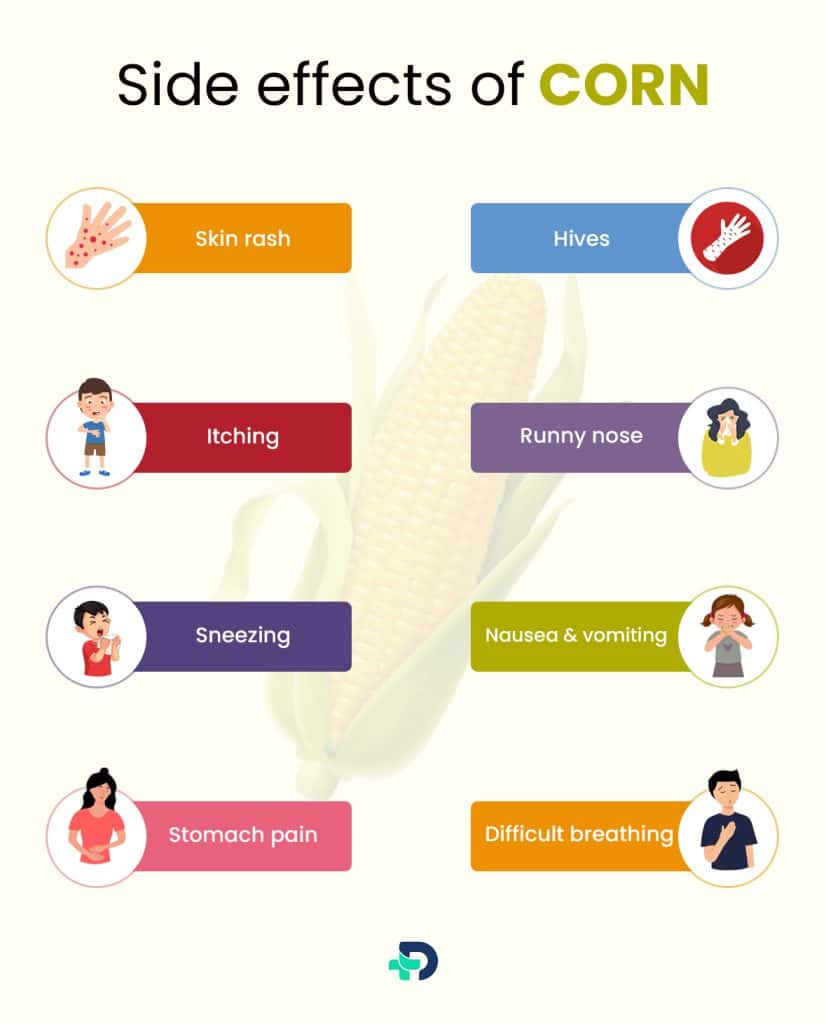
Side effects of Corn
Most people can tolerate corn well. However, some people might have the following side effects:
- Skin rash
- Hives
- Itching
- Runny nose
- Sneezing
- Nausea and vomiting
- Stomach pain
- Swelling in the mouth, lips, tongue, and throat
- Difficult breathing 9Side effects| Researched based study from Nlm.nih.gov
Downsides
Downsides & Risk of corn
Corn is generally safe, but some downsides do exist. They are as follows:
Mycotoxin
- Mycotoxins are the toxin produced by fungi. Some cereal crops are vulnerable to fungal contamination. The main types of mycotoxin produced in fungi are aflatoxin, fumonisins, and trichothecenes. Mycotoxins mainly occur in stored cereals and have potential health hazards.
- High intake of contaminated corn has the risk of food poisoning, cancer, and neural tube defects in babies.
- Preventive measures for fungal contamination include using fungicides during cultivation and correct drying techniques 10Downside| Researched based study from Nlm.nih.gov
Antinutrients
- Like all other cereals, corn also contains phytic acid.
- Phytic acids are antinutrients and hamper the assimilation of other nutrients, such as zinc and iron, in the body.
- It is not a concern for people who consume a well-balanced diet. It might be a severe concern for developing countries as cereal grains are the staple food.
- Soaking and sprouting corn might reduce phytic acid levels 11Downside| Researched based study from Nlm.nih.gov
Corn intolerance
- Corn contains zein protein that is similar to gluten. So corn intake might trigger symptoms such as stomach gas, fatigue, and diarrhea in people with celiac disease, irritable bowel syndrome, and FODMAP intolerance12Downside| Researched based study from Nlm.nih.gov
Selection
Buying & selection of Corn
- One can buy corn from the local markets or grocery stores from May through September.
- One must look for corn whose husks are tight, green, and not dried out. The ears should be round and feel solid when touched.
- While buying, one should remember that there are two types of corn: sweet and genetically modified. Sweet corn is the type that people usually consume whole. While field corn is genetically modified corn made for animal feed and processed chemical ingredients
- While buying, look for labels that are marked as organic and GMO (genetically modified organism) free.
Storage of corn
- One can store corn with the husk in the freeze for up to five days
- However, corn tastes best when consumed within four to five days of buying 13Storage| Researched based study from Sciencedirect.com
Tips
Tips for enjoying Corn
- Boil corn after removing the husk. Then lightly coat with butter and sprinkle some salt and enjoy
- Sprinkle cooked corn in salads as a topping to enhance the taste
- Fry corn with chives and cake batter to prepare delicious corn fritters
- Add cooked corn to soups and stews
- Add corn as a base for nutritious homemade cornbread
- Add corn to tomatoes, black beans, and basil, and enjoy it as a side dish
Takeaway
Key Takeaways
- Corn is one of the most favored cereal grains with specific health benefits.
- It is a good source of antioxidants and is rich in vitamins and minerals
- Corn can be an excellent tasty addition to a well-balanced diet
Any feedback on this article?
 This Articles content was accurate
This Articles content was accurate Very Informative Article
Very Informative Article I have a question or a comment
I have a question or a comment
 This article contains inaccurate content
This article contains inaccurate content This article was not helpful
This article was not helpful I have a question or a comment
I have a question or a comment
We appreciate your helpful feedback!
Checkout our social pages
References
-
Science Direct
Chapter 3 - Corn | Overview
-
U.S. DEPARTMENT OF AGRICULTURE
Corn, sweet, white, raw | Nutrition
-
Science Direct
Corn phytochemicals and their health benefits | Nutrition
-
National Library of Medicine
Antioxidant activity of grains | Nutrition
-
National Library of Medicine
Dietary sources of lutein and zeaxanthin carotenoids and their role in eye health | Benefits
-
Science Direct
Dietary fiber and the microbiota: A narrative review by a group of experts from the Asociación Mexicana de Gastroenterología | Benefits
-
National Library of Medicine
Nut, corn, and popcorn consumption and the incidence of diverticular disease | Benefits
-
Science Direct
The flavonoid quercetin ameliorates Alzheimer’s disease pathology and protects cognitive and emotional function in aged triple transgenic Alzheimer’s disease model mice | Benefits
-
National Library of Medicine
Corns | Side effects
-
National Library of Medicine
Cytological screening and 15 years’ follow-up (1986-2001) for early esophageal squamous cell carcinoma and precancerous lesions in a high-risk population in Anyang County | Downside
-
National Library of Medicine
Phytate in foods and significance for humans: food sources, intake, processing, bioavailability, protective role and analysis | Downside
-
National Library of Medicine
Gut mucosal granulocyte activation precedes nitric oxide production: studies in coeliac patients challenged with gluten and corn | Downside
-
Science Direct
Maize - an overview | Storage














